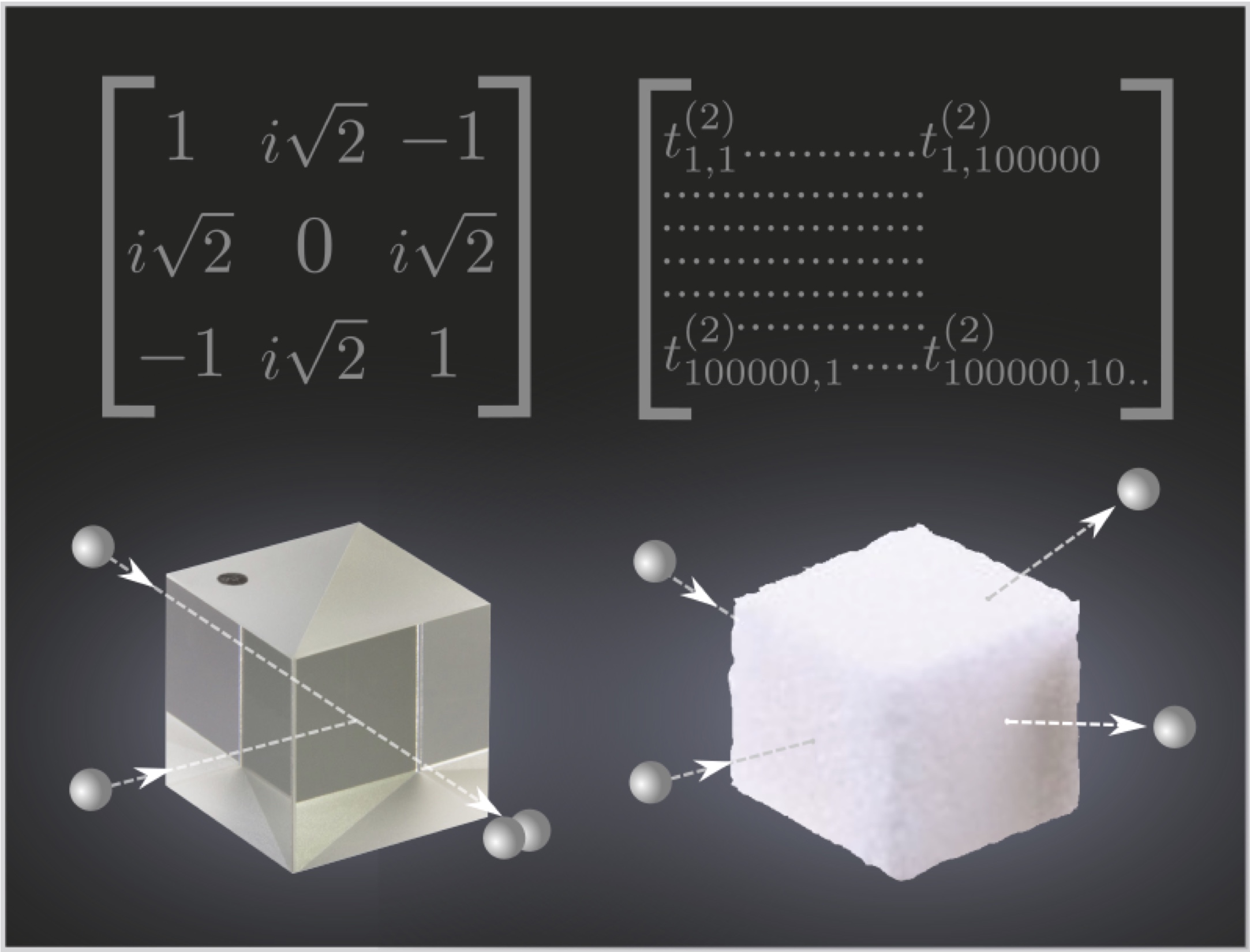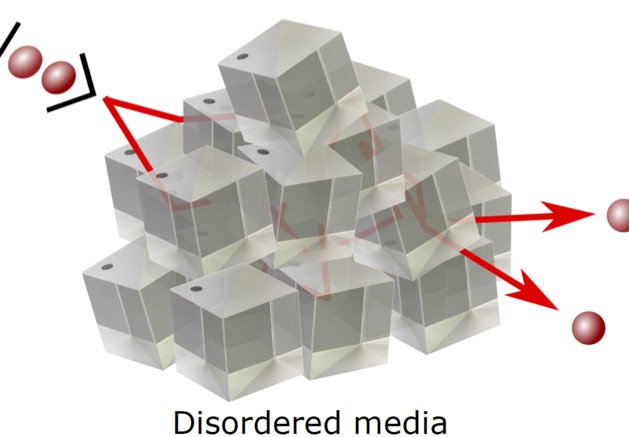Publications
- S. Leedumrongwatthanakun, L. Innocenti, H. Defienne, T. Juffmann, A. Ferraro, M. Paternostro, S. Gigan Programmable linear quantum networks with a multimode fiber arXiv:1902.10678 [quant-ph]
-
H. Defienne, S. Gigan, Spatially-entangled Photon-pairs Generation Using Partial Spatially Coherent Pump Beam Phys. Rev. A 99, 053831(2019) link
- H. Defienne, M. Barbieri, I. A. Walmsley, B. J. Smith, S. Gigan,Two-photon quantum walk in a multimode fiber , Science Advances, Vol. 2, no. 1, e1501054 (2016) link
Quantum Information Processing in complex Media
A random medium can be seen as nothing more than a very complex beamsplitter, with a huge number of modes. It is therefore a very multimode platform to study quantum random walks for instance. Still, quantum state manipulation in such system has been considered hopeless and too lossy. Thanks to wavefront shaping, we have demonstrated how a quantum state can be guided through a complex medium, and coherence was conserved [Defienne2014].
More recently, we Investigated how Two-photon interferences could be tailored, and we could “encode” into a complex medium a simple 2×2 beamsplitter, and reproduce one of the most fundamental experiment in quantum optics, the Hong-Ou-Mandel experiment, where indistinguishable pairs of photons incident on a balanced beamsplitter always “bunch” and leave in pairs by the same port, producing the famous “dip” in coincidence detection .However, in contrast with this experiment, we could -just by changing the SLM configuration- control at will all the coefficients of the beamsplitter, and therefore not only observe the dip, but also a “peak” where the coincidences nearly double [Defienne2016] .
We extended this concept further and demonstrated that thanks to its strong random connectivity, we could engineer, or program, simple linear circuits for photons, and even reproduce some table-top quantum optics experiments, using our system [Leedumrongwatthanakun2019]. This paves the way towards scalable linear circuits, that could be used in for various quantum optics tasks, in particular for photonic quantum computing.




